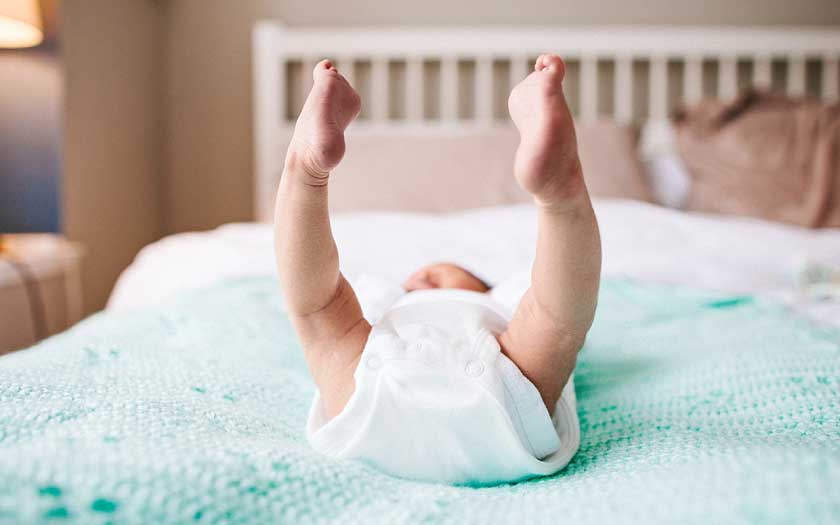If your child’s diaper area appears to be red and irritated, chances are that its nappy rash we’re looking at. The rash may be located on the skin surface, in the skin folds, or both.
A nappy rash may look like any of the following:
- Red and shiny skin
- Raw and tender skin
- Raised bumps or scales
- Red spots
Nappy rash can be present as a few prickly red spots in a small area — or extensive, with tender red bumps that spread to your child’s tummy and thighs.
Firstly, do know that there is hardly a baby who will not develop a nappy rash at some time or another. The important thing for all parents is to know how to recognize the rash when it occurs, what’s causing it, and of course, how to treat it. Preventive actions also exist and parents are advised to learn up on them to minimize the chances of nappy rash. It’s important to know that having to deal with a nappy rash is an essential part of parenting and having a baby with nappy rash does not mean you’re negligent as a parent.

Common misconceptions of rash problems in babies
When it comes to a baby’s skin, especially that little bottom, there are indeed many misconceptions. Here are some of them:
- A baby’s bottom is supposed to be perfectly smooth and rash-free
- Nappy rash is abnormal
- Nappy rash is a sign of food or formula allergies
- The nappy rash means the baby has bad diarrhea or a yeast infection
Causes of nappy rash
There is more than one cause of the nappy rash. Knowing what’s causing your baby’s nappy rash is important, for then you can have a better chance of preventing it. Here are the most likely culprits:
Wetness in the diaper area
Trapped moisture, especially from urine, is one of the main causes of nappy rash. When urine mixes with bacteria from baby’s stools especially, it breaks down and forms ammonia, which is very harsh on delicate, sensitive skin. This explains why children with frequent bowel movements or those suffering from diarrhea are more prone to diaper rash.
Note: Needless to say, changing your child’s diaper often is one way to curb nappy rash. However, a rash may also occur if your child is sensitive to certain chemicals in a brand of diaper.
Introduction of new foods into baby’s diet
It’s common for most babies to experience an outbreak of nappy rash when they start eating solid food and also when new foods are introduced into their diets.
The transition from milk to solid foods changes the composition of your baby’s stools. The same applies to any new foods which are introduced afterwards. The acids in certain foods, such as strawberries and fruit juices, can also be especially troublesome for some babies. A new food might increase the frequency of your child’s bowel movements as well, making him or her more prone to nappy rash.
Chafing or sensitivity to chemicals
A baby’s diaper rash may be the result of the diaper constantly rubbing against his skin, resulting in a chafing. A rash can also develop if your baby is particularly sensitive to chemicals like those present in a disposable diaper or the fragrances in laundry detergents used to wash a cloth diaper. It could also be that a lotion or even powder you’re using at diaper time doesn’t agree with your baby’s sensitive skin.
Infection
The diaper area is warm and moist and that makes it the ideal place for bacterial and yeast infections to take place. This is especially so in the cracks and folds of your baby’s skin.
Antibiotics
Children on antibiotics, or whose breastfeeding mothers are on antibiotics, sometimes get yeast infections because these drugs not only kill the bacteria they’re meant to destroy, but they also tend to reduce the number of healthy bacteria that help keep yeast in check as well. Antibiotics are also known to cause diarrhea, which can contribute to diaper rash.
Care and treatments for nappy rash
- Change your baby’s diaper frequently. Change a wet or soiled diaper right away — do not put it off, even for a few minutes. Check your baby’s diaper once every hour during the day, and at least twice during the night, for sometimes, a baby might sleep through a wet nappy or even a soiled one, making the nappy rash worse.
- Keep the nappy area clean always. Clean your child’s diaper area with plain, warm water. You may use a squirt bottle, wet cotton balls, or a moist, soft cloth. Allow the skin to air dry, or gently pat it dry with a clean cloth. Avoid using baby wipes or soap during diaper changes. This may cause the nappy rash to burn or sting. Make sure your baby’s diaper area is completely dry before you put on a new diaper.
- Give some “air time”. Let your baby go diaperless for as much as possible. Do this often, especially when you’re at home. Place a large towel underneath your baby and allow the little one to rest or play sans diapers. The exposure to air can help heal the rash.
- Pat dry, don’t rub. Gently pat-dry the affected area with a soft clean towel after washing and do not rub, as this could make your baby’s rash worse.
- Protect with a cream or ointment barrier. Use a good cream or ointment designed especially for a nappy rash for your baby’s diaper area. Make sure the diaper area is clean and dry before you apply it.
- Use extra-absorbent disposable diapers. Know the qualities of the disposable diapers you choose. Select the type that pulls moisture away from your baby’s skin so it will not be as irritated. If your child wears cloth diapers, use a stay-dry liner to help pull moisture away from the skin.
Yeast diaper rash
Some diaper rashes are caused by a yeast called Candida Albicans, which often causes problems when a baby who already has a diaper rash goes on antibiotics or has thrush. This rash appears bright red and raw, covers large areas, and is surrounded by red spots. Follow the guidelines for nappy rash treatment and it should improve in a few days. Bring your baby to see a doctor if:
- Any big blisters or sores (more than one inch across) develop
- The rash has not improved in three days
- The rash becomes bright red, raw, or bleeds
- Pimples, blisters, boils, sores, or crusts develop
- Your baby’s rest and sleeping is affected
- The rash spreads beyond the diaper area
- Your baby gets sick or has an unexplained fever
When you need to see a doctor
Generally, a nappy rash can be treated successfully at home. However, if the rash persists, increases, or if sores appear on your baby’s skin, talk to your doctor. You should also seek medical care if the rash is associated with fever, there is pus draining from the rash or your child seems very irritable.
Depending on what type of rash your baby has, the doctor may choose to use an antifungal cream, an antibiotic cream, or a mild steroid cream for a few days until the rash disappears.
What you can do before your baby’s appointment at the doctor’s office
List your baby’s signs and symptoms, and for how long your baby has had them.
Write down your baby’s key medical information, including other conditions for which your baby has been treated and any prescription or over-the-counter medications your baby has recently taken. If your baby is breastfed, also note any medications he or she may have been exposed to through your breast milk.
List all products that come into contact with your baby’s skin. Your baby’s doctor will want to know what brand of diapers, laundry detergent, soaps, lotions, powders, and oils you use for your baby. If you suspect one or more products may be causing your baby’s diaper rash, bring them to the appointment so your doctor can read the label.
Write down questions to ask your doctor. Creating your list of questions in advance can help you make the most of your time with your doctor.
Below are some questions you should ask the doctor:
- What is the most likely cause of my baby’s rash?
- Are there any other possible causes?
- What can I do to help my baby’s skin heal?
- What diaper ointments or creams would you recommend for my baby?
- When should I use an ointment instead of a cream, and vice versa?
- Are there any other treatments you’d suggest?
- Are there any products or ingredients that I should avoid using on my baby?
- Should I avoid exposing my baby to any foods, either through breast milk or through my baby’s diet?
- How soon do you expect my baby’s symptoms to improve?
- What can I do to prevent this condition from recurring?
Questions you can expect from your doctor
Your doctor is likely to ask you a number of questions too. It would be wise to look through the possible questions below to help you at the doctor’s office.
- When did you first notice your baby’s signs and symptoms?
- Do you suspect any particular triggers for your baby’s condition?
- What type of diaper does your baby typically wear?
- How often do you or your baby’s child care provider change your baby’s diaper?
- What types of soap and wipes do you use to clean your baby?
- What laundry detergent do you use to wash your baby’s clothes?
- Is your baby breastfed?
- Have you introduced your baby to solid foods?
- What treatments have you tried so far for your baby’s rash? Has anything helped?
- Has your baby recently had any other medical conditions, including any illness that caused diarrhea?
- Has your baby recently taken any new medications?
Handle with care
Frequent and vigorous washing with soap can strip a baby’s tender skin of the natural protective barrier. Wash gently but thoroughly, including the skin folds. Do not use diaper wipes if your child has a rash, as they can burn and increase the irritation.
You can try warm water from a pitcher or use a squirt bottle.
Do away with soap. If you need to, go for gentle non-soap cleanser instead of washing. Rinse well and pat dry.
Featured image source: www.todaysparent.com


